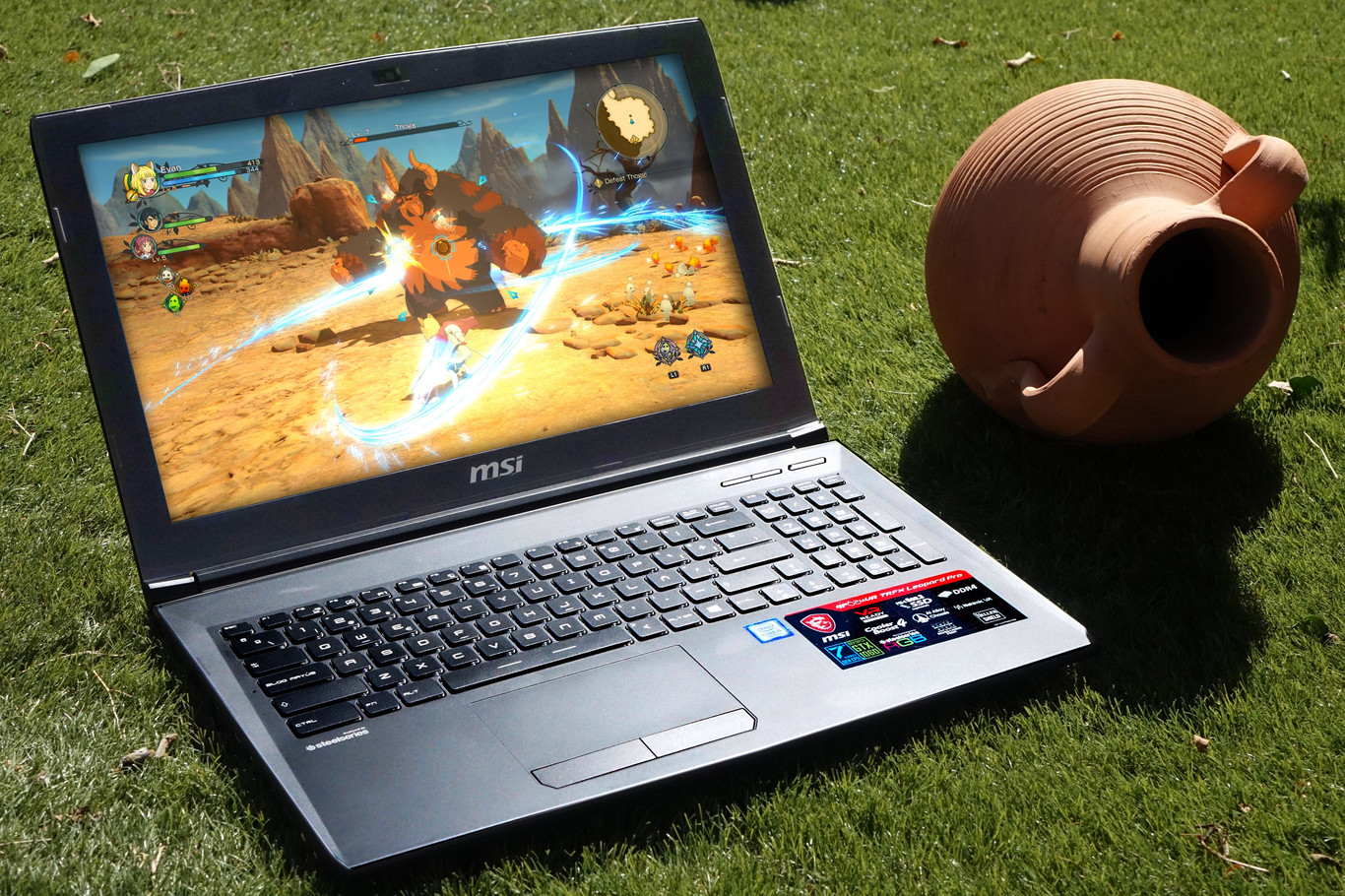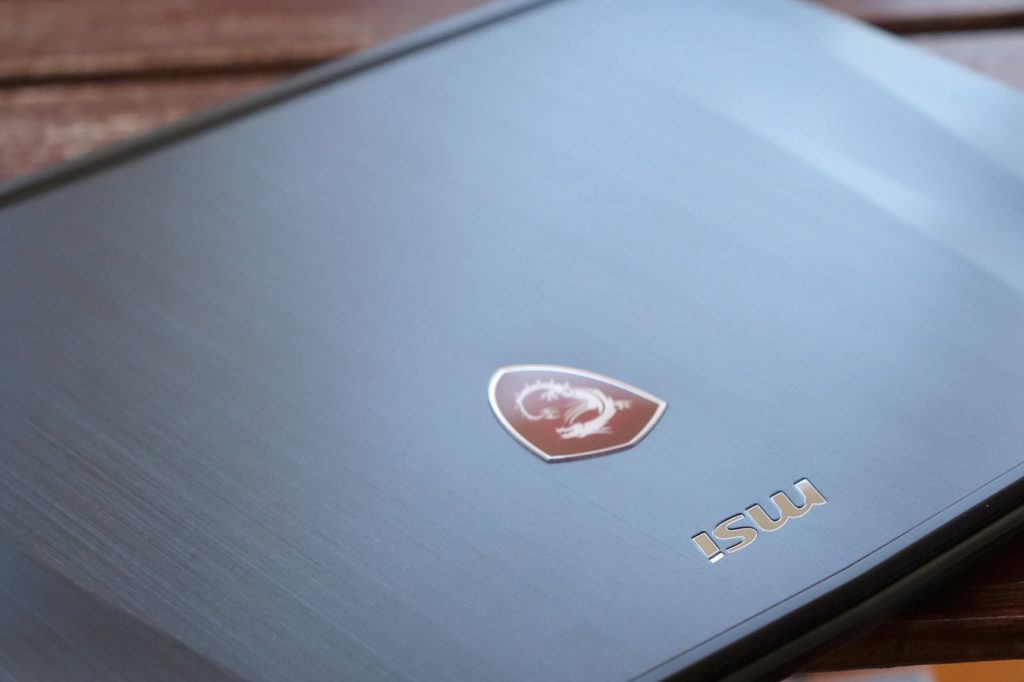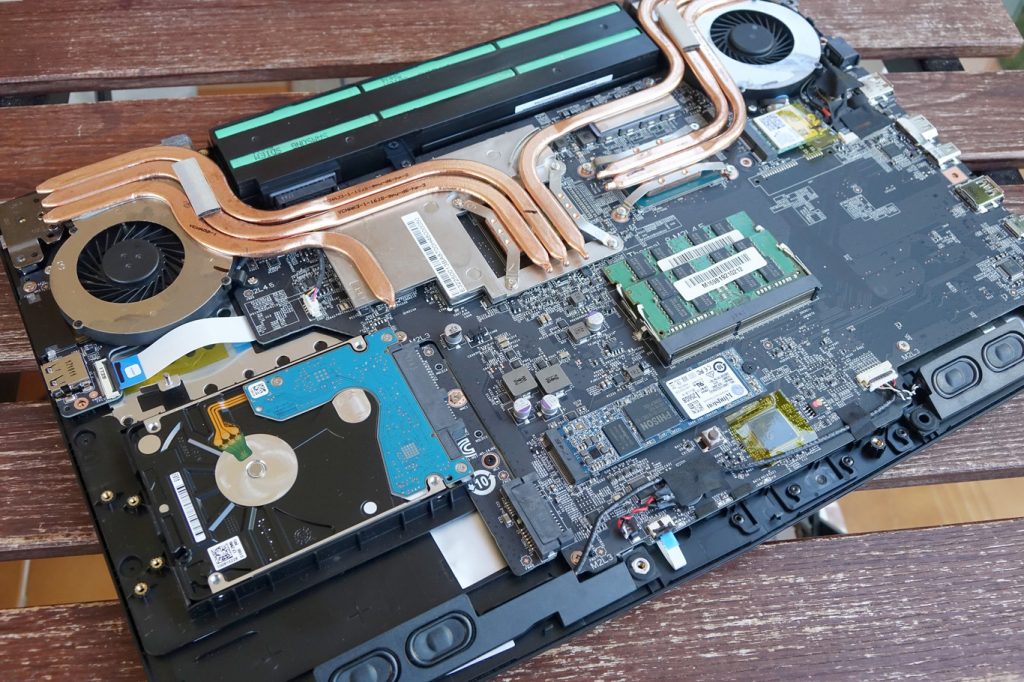
The rules of the game are the same for everyone: the higher resolution, graphic quality and cadence of images per second, the more satisfactory our experience is usually. Even being aware that there are titles that we can enjoy a lot, especially indie games, without the need to perform any technical boast.
It is likely that almost all gamers agree that the gameplay and their ability to have fun are the most important features of a video game. But if, in addition, we can enjoy it at 4K and with a sustained image rate of more than 60 FPS, better than better. Nobody rejects a pear in sweet. However, the hardware we currently need to play in these conditions is still expensive. Fortunately, if we settle for enjoying our titles at 1080p we have access to a wide range of machines at interesting prices. It is precisely in this scenario that we aspire to feel comfortable with the MSI laptop that we are going to analyze.
Designing a balanced laptop, which offers us a satisfactory experience when we use it to play, but which, at the same time, has a moderate price, is not easy. In fact, I am convinced that it is more complex to keep the cost well tied in a powerful, but accessible proposal, that to fine tune a team designed to offer us the maximum power without any type of restriction in what has to do with its price.
To implement a high-end computer, whether portable or desktop, with little to make concessions to its price manufacturers often choose to integrate the most advanced components of the market in regard to your CPU, GPU, chipset and SSD storage. And, at least, 16 GB of RAM. It is an almost infallible recipe. However, when the objective is to offer a good experience with the games and a price as competitive as possible, betting on the most sophisticated components is not viable; it is essential to spin and fine- tune a balanced equipment that offers the appropriate performance and a competitive price.
I think it is important to start this analysis by consolidating the scenario in which we are going to move because, precisely, this MSI laptop for gamers competes in this last field of play. Its goal is not to allow us to play 4K UHD over 60 FPS, but offer a satisfactory experience in 1080p with a wide range of games in exchange for an outlay that in the configuration with 8 GB of RAM is slightly below the psychological barrier of the $1000. Its purpose is not bad, but we have to check if it really reaches its goal. So … let’s go there.
MSI GP62MVR 7RFX Leopard Pro: Technical specifications
I propose that we start by taking a first look at the configuration of this equipment. Let’s start with the screen. MSI engineers have opted for an IPS LCD panel with anti-reflective coverage and Full HD resolution, as expected given the price segment in which we move. But what makes this screen really interesting are its native 120 Hz refresh and its response time of 3 ms, two very appealing features in a team designed above all to “run” video games.
The next component that is worth stopping is the CPU. It is clear that here we have one of the limitations imposed by the cost of the equipment because it has a microprocessor Core i5-7300HQ, and not with an Intel Core i7. Even so, on paper this chip should offer an interesting performance with games because in this area the maximum clock frequency is usually more important, which in this Core i5 is 3.5 GHz, than the degree of parallelism, which is reduced some “modest” 4 cores and 4 threads (threads).
The choice of the GPU is also what you would expect in a gaming notebook that orbits around 1000 dollars: a GeForce GTX 1060 from NVIDIA backed by 3 GB of GDDR5-type memory. As far as RAM is concerned, the starting point for this model is 8 GB DDR4, although the version we have analyzed incorporates 16 GB. And of the other components of the team I find interesting to highlight the 256 GB SSD unit manufactured by Kingston and the mechanical hard drive of Seagate with a capacity of 1 TB. In any case, here you have your detailed specifications …
| MSI GP62MVR 7RFX LEOPARD PRO | |
|---|---|
| SCREEN | IPS LCD 15.6-inch Full HD anti-glare (1920 x 1080 pixels) 120 Hz / Response time: 3 ms |
| SIZE | 383 x 260 x 22 ~ 29 mm |
| WEIGHT | 2.2 Kg |
| PROCESSOR | Intel Core i5-7300HQ seventh generation (14 nm, 4 cores / 4 threads, 6 MB L3 cache, base frequency 2.5 GHz / maximum frequency 3.5 GHz) |
| GRAPHICS | NVIDIA GeForce GTX 1060 (3 GB GDDR5) |
| RAM | 16 GB DDR4 (2,400 MHz) / 2 x 8 GB SDRAM |
| STORAGE | SSD Kingston 256 GB NVMe M.2 + 1 TB Seagate SATA600 HDD 5,400 rpm |
| OS | Windows 10 Home |
| WIRELESS CONNECTIVITY | WiFi 802.11ac and Bluetooth 4.2 |
| BATTERY | 6-cell lithium ion / 41 Wh |
| PORTS | 1 x RJ-45, 2 x USB 3.0, 1 x HDMI (4K @ 30 Hz), 1 x USB-C Gen 2, 1 x USB 2.0, 1 x mini-Display Port, 1 x microphone jack, 1 x headphone jack and 1 x SD reader |
| PRICE | From $999 euros (model with 8 GB of RAM) |
Design and construction: Suitable for gamers
The finish of this MSI team is not luxurious. Its price conditions, as is logical, the material used in the manufacture of the chassis, which in this PC combines polycarbonate and aluminum alloy. The first of these materials we have in the base and side profiles of the team, while the cover that supports the keyboard and touchpad is a very good quality aluminum alloy, and with a nice touch.
The back cover of the screen, which is responsible to some extent for giving structural rigidity to the laptop, and also to protect the delicate panel of random impacts, is made of aluminum. Of alloy brushed aluminum, more accurately. As you can see, MSI has used this last material in the parts most exposed to wear, something to be appreciated in a team with a moderate price.
Let’s look now at the hinges that hold the screen to the main chassis of the laptop. In the image that you have below these lines you can see that their size is not particularly generous, but they have enough robustness to ensure trouble-free use for a long time, so, in principle, I would not worry about this component, that we often pay less attention than it deserves.
Continue Reading: Nvidia Max-Q: Laptops to play three times thinner and three times more powerful
A strict design decision that reveals the condition of portable for games of this equipment is the presence of two nozzles in the rear profile whose function is to evacuate the hot air dissipated from the interior of the chassis, above all, by the two components that heat up the most: the CPU and the GPU. Later on, in the section dedicated to our test bench, we will delve into the temperature at which these components work when they are subjected to intense stress, but I can tell you that these two nozzles fulfill their function quite effectively.
Interior design and refrigeration
The image you have below these lines is one of the most interesting in this analysis. And it is because it clearly reveals the cooling system that MSI engineers have devised to ensure that the hottest components in the equipment (CPU, GPU and northbridge) always work below their maximum threshold of temperature. Even when we subject them to intense stress.
The material used in the conduits (heatpipe) that are responsible for transporting the energy in the form of heat dissipated by the chips that I mentioned in the previous paragraph to the fans is copper. Undoubtedly, it is a wise decision because this element has a higher heat conductivity index than aluminum, which is the other material that is usually used in these ducts.
In addition, the presence of two fans of a respectable size contributes to the transfer of heat from the copper conduits to the air through the convection phenomenon is carried out effectively, preventing, in this way, the components that dissipate more energy in the form of heat they reach their maximum temperature threshold.
One last interesting note: the two photographs that illustrate this section of the analysis reveal that the interior of the team is quite “clean”. And, as you can see, there are hardly any data buses and other cables scattered over the PCB (printed circuit board). Users are not aware of this unless we open our computer, but even so, it is appreciated because it shows that those responsible for the design of the team have been meticulous.
Keyboard and touchpad: At height
If we have the opportunity to choose, most of the gamers prefer mechanical keyboards. A good keyboard of this type usually offers us the tact, the resistance and the suitable route not only to play, but also to write or carry out any other activity. This laptop incorporates a chiclet type keyboard, and not a purely mechanical one, but, even so, I was pleasantly surprised by its quality.
 The keys practically do not have any type of transversal oscillation, and their tact is almost at the height of which they offer us the best mechanical keyboards. In addition, its route is 1.9 mm, a distance that, in my opinion, favors that touch that we like so many gamers. And, of course, it has RGB backlight programmable by the user, so I can not put any hits.
The keys practically do not have any type of transversal oscillation, and their tact is almost at the height of which they offer us the best mechanical keyboards. In addition, its route is 1.9 mm, a distance that, in my opinion, favors that touch that we like so many gamers. And, of course, it has RGB backlight programmable by the user, so I can not put any hits.
Come now with the touchpad. Its size is generous and is slightly offset towards the left end of the equipment, which keeps it centered if we take as reference the central block of the keyboard. Good up here. The only small criticism I can put is that sometimes I have been forced to repeat some touches because the cursor did not accurately reflect the movement I needed to make. Even so, this slight lack of sensitivity at specific moments is only a small annoyance that does not get to muddy the user experience.
Software and connectivity
 One of the disadvantages that we stumble users when we buy a new PC with Windows is the crapware. All manufacturers, without exception, include many pre-installed applications that users do not ask for, and, what is worse, they hardly add value. In addition, some of them initiate processes that run in the background, and that, therefore, monopolize resources, unless we realize that they are there and we bother to prevent their automatic execution. Or, even, to uninstall them.
One of the disadvantages that we stumble users when we buy a new PC with Windows is the crapware. All manufacturers, without exception, include many pre-installed applications that users do not ask for, and, what is worse, they hardly add value. In addition, some of them initiate processes that run in the background, and that, therefore, monopolize resources, unless we realize that they are there and we bother to prevent their automatic execution. Or, even, to uninstall them.
MSI also implements many applications of its own harvest on its equipment, so it is not an exception to this rule. But, yes, although I prefer that when I buy a Windows PC the operating system is completely clean (I’ll take care of installing the software that really interests me), I have no qualms to recognize that some of these tools are useful.
The Afterburner, Dragon Center and Battery Calibration applications are the ones that add value. In fact, they serve to accurately monitor the working conditions of the CPU and the GPU, to program the keyboard and to recalibrate the battery, among other functions. So not only do they not bother, but their presence is appreciated.
As far as connectivity is concerned, MSI has done the homework. This equipment incorporates controllers compatible with the wireless WiFi 802.11ac and Bluetooth 4.2 standards. In addition, on the left side of the chassis we have a wide range of connectors, among which it is worth highlighting two USB 3.0, one USB type C, one more mini-Display Port and an HDMI output capable of transporting 4K UHD signals with a cadence of 30 Hz.
Unlike the left side profile, the right side only picks up a USB 2.0 port, the slot that allows us to read the contents of our SD cards and the necessary power connector.






